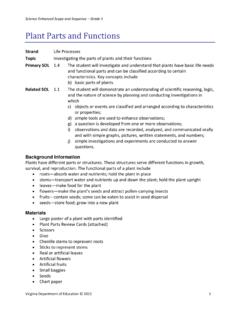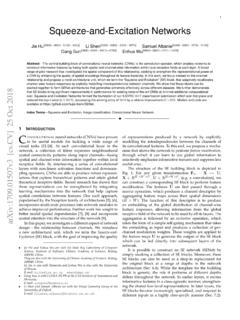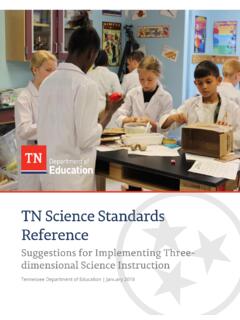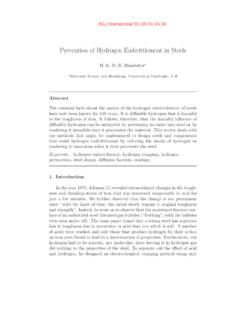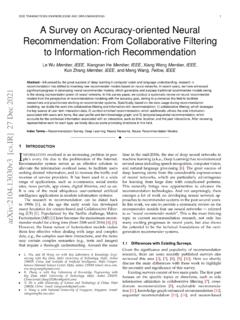Transcription of Teaching Phonemic Awareness and Word Reading Skills ...
1 Teaching Phonemic Awareness AND PHONICS 1. Teaching Phonemic Awareness and Word Reading Skills : Focusing on Explicit and Systematic Approaches Stephanie Al Otaiba, Jill Allor, Kristi Baker, Carlin Conner, Jennifer Stewart, and Veronica Mellado de la Cruz Simmons School of Education and Human Development, Southern Methodist University Author Notes Perspectives on Language and Literacy Structure, Summer 2019. This paper is not the copy of record and may not exactly replicate the authoritative document published in Perspectives. Please do not copy or cite without permission.
2 Al Otaiba, S., Allor, J. H., Baker, K., Conner, C., Stewart, J., & Mellado de la Cruz, V. M. (2019). Teaching Phonemic Awareness and word Reading Skills : Focusing on explicit and systematic approaches. Perspectives on Language and Literacy, 45, 11-16. The research reported here was supported by the Institute of Education Sciences, Department of Education, through Grant R324A160132 and grant number R324A130102 to Southern Methodist University. The opinions expressed are those of the authors and do not represent views of the Institute or the Department of Education.
3 The first two authors, Stephanie Al Otaiba and Jill Allor, are co-developers and co-own the Friends on the Block published curriculum (with Jennifer Cheatham). Development of the curriculum was funded by IES Grant R324A130102. Teaching Phonemic Awareness AND PHONICS 2. Correspondence concerning this article should be addressed to Dr. Stephanie Al Otaiba, Simmons School of Education and Human Development Southern Methodist University, PO. Box 750455; Dallas, TX 75275-0455. Teaching Phonemic Awareness AND PHONICS 3. Abstract For the purpose of this article within this special issue on Structured Literacy , we were asked to address the code-focused Skills of Phonemic Awareness and word Reading .
4 Findings from research studies converge to show that explicit and systematic instruction helps most students understand how speech sounds, or phonemes, map to letters and patterns within words, which can greatly reduce the prevalence of Reading problems ( , Brady, 2011; Lonigan & Shanahan, 2009; National Reading Panel Report (NRP), 2000; Wanzek et al., 2013). However, challenges learning these Skills are an indication of many Reading difficulties, which limit students'. understanding of grade-level academic material. Most (67%) of fourth grade students with disabilities read below a basic level (National Assessment of Educational Progress (NAEP, 2015).)
5 Teaching Phonemic Awareness AND PHONICS 4. The responsibility for providing early interventions to prevent Reading difficulties initially rests with general educators, but may gradually involve dyslexia specialists, special educators, and other service providers, such as speech and language pathologists. Since 2004, under the Individuals with Disabilities Act and continuing under the Every Student Succeeds Act (ESSA, 2015), schools are expected to monitor students' risk of Reading problems on universal screeners, provide evidence-based early interventions, track student progress, and evaluate students with the most severe Reading needs for special education and/or dyslexia services.
6 The terms Response to Intervention (RTI) or Multi-Tiered Systems of Support (MTSS) are used to describe this process of providing a strong core, or Tier 1 instruction, followed by increasingly intensive tiers of intervention guided by ongoing student data ( , Gersten et al. 2009). In our work training teachers to deliver Reading instruction and intensive interventions, we rely on a framework known as The simple View of Reading (Gough & Tunmer, 1986) to explain that Reading is the product of a) code-focused Skills such as Phonemic Awareness and decoding, and b) meaning-focused Skills such as vocabulary and comprehension.
7 Both of these sets of Skills are part of the International Dyslexia Association's recently trademarked term Structured Literacy (and are emphasized in IDA's Knowledge and Practice Standards;. ). Structured Literacy instructional approaches are consistent with the broader research base for explicitly and systematically Teaching the structure of language across the domains of listening, speaking, Reading , and writing ( , NRP, 2000). The approach is also consistent with the broader research base on effective instructional strategies for all students, but are particularly critical for students with or at-risk for Reading problems; this research supports the importance of teachers carefully selecting and sequencing instructional targets, explicitly modeling Skills , providing immediate supportive and Teaching Phonemic Awareness AND PHONICS 5.
8 Corrective feedback, ensuring students have multiple opportunities to practice to mastery, and encouraging student engagement ( , Carnine, Silbert, Kame'enui, Slocum & Travers, 2017). Code-focused Skill Instructional sequence Also known as phonological sensitivity, phonological Awareness is the global Awareness of the sounds in speech, including the words in a sentence, including the syllables within a word, and what is known as the onset and the rime. The onset is the first sound, and the rime, is the remainder of a word. For example, in the word rime , the onset is /r/ and the rime is /ime/.
9 Phonological Awareness is the precursor to Phonemic Awareness , or the Awareness of each individual sound within a word. More advanced levels of Phonemic Awareness include manipulating sounds which support higher levels of phonics and spelling word and syllable patterns (Kilpatrick, 2015). Although this type of advanced instruction supports accurate and fluent Reading , we focus more on the initial levels of Phonemic Awareness instruction to support early decoding. Mapping Phonemic Awareness to the Alphabetic Principle Although there are many different Skills within Phonemic Awareness that require explicit Teaching , blending and segmenting at the phoneme level are the most important Skills as they lead directly to decoding ( , sounding out simple words) and encoding ( , spelling simple words).
10 We illustrate the general progression of these Skills in Figure 1, showing how students move from a basic level of understanding that spoken words are made up of speech sounds to connecting that idea to print by sounding out printed words and spelling ( , alphabetic principle). The most basic level within Figure 1 focuses on the first sound of a word. At this level, the teacher provides the student with practice blending simple words ( , mat). The teacher says the first sound and then the rest of the word ( , rime), and the student blends these Teaching Phonemic Awareness AND PHONICS 6.










